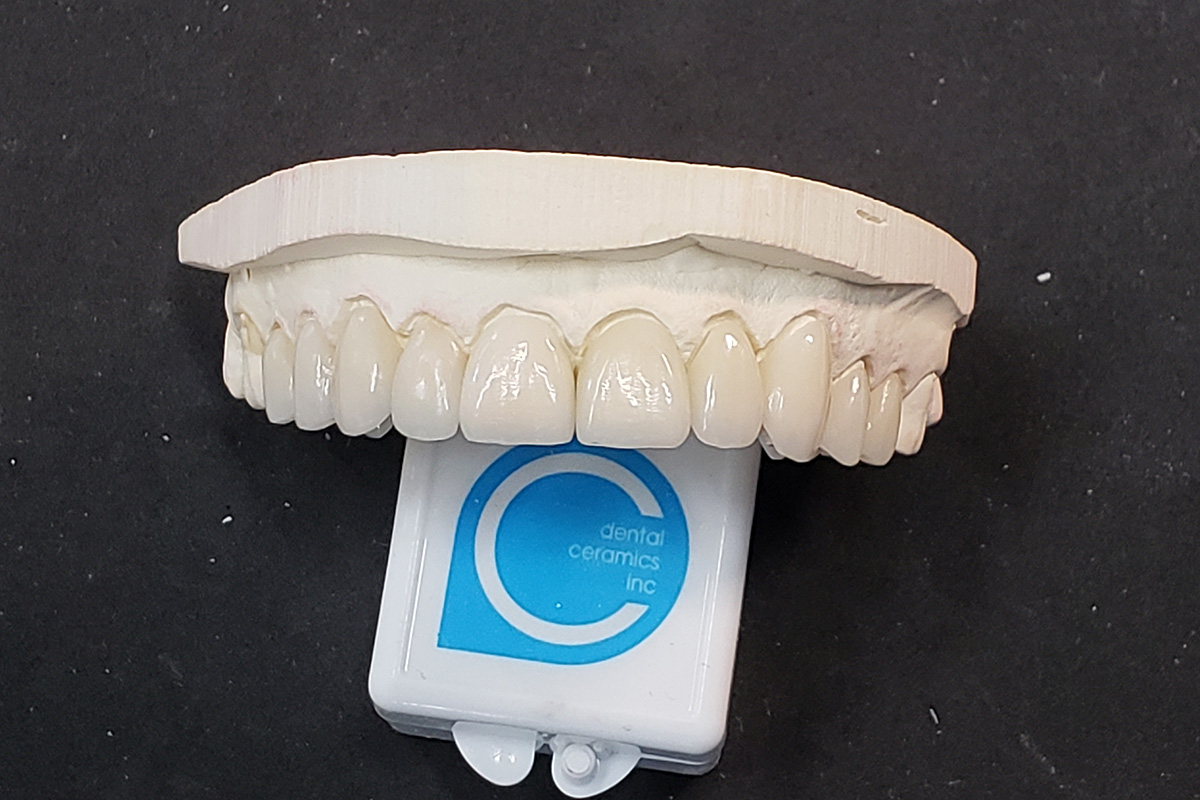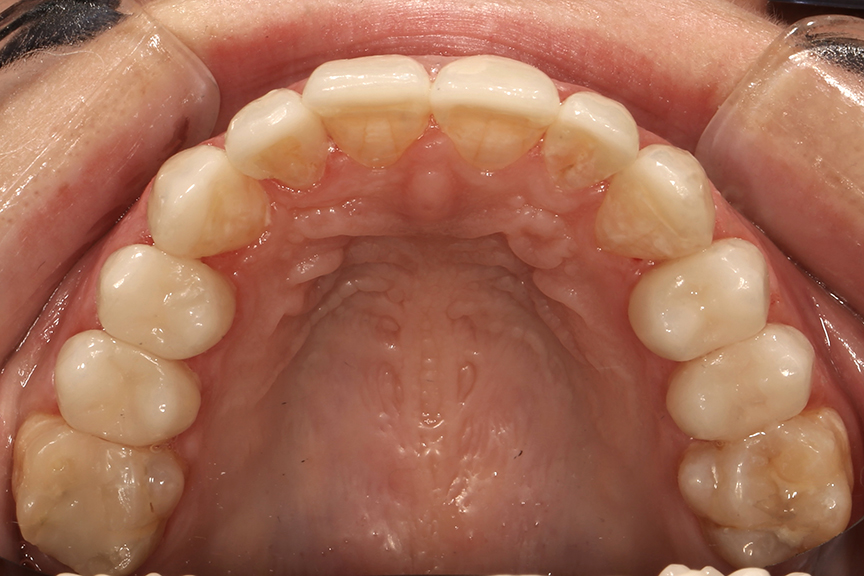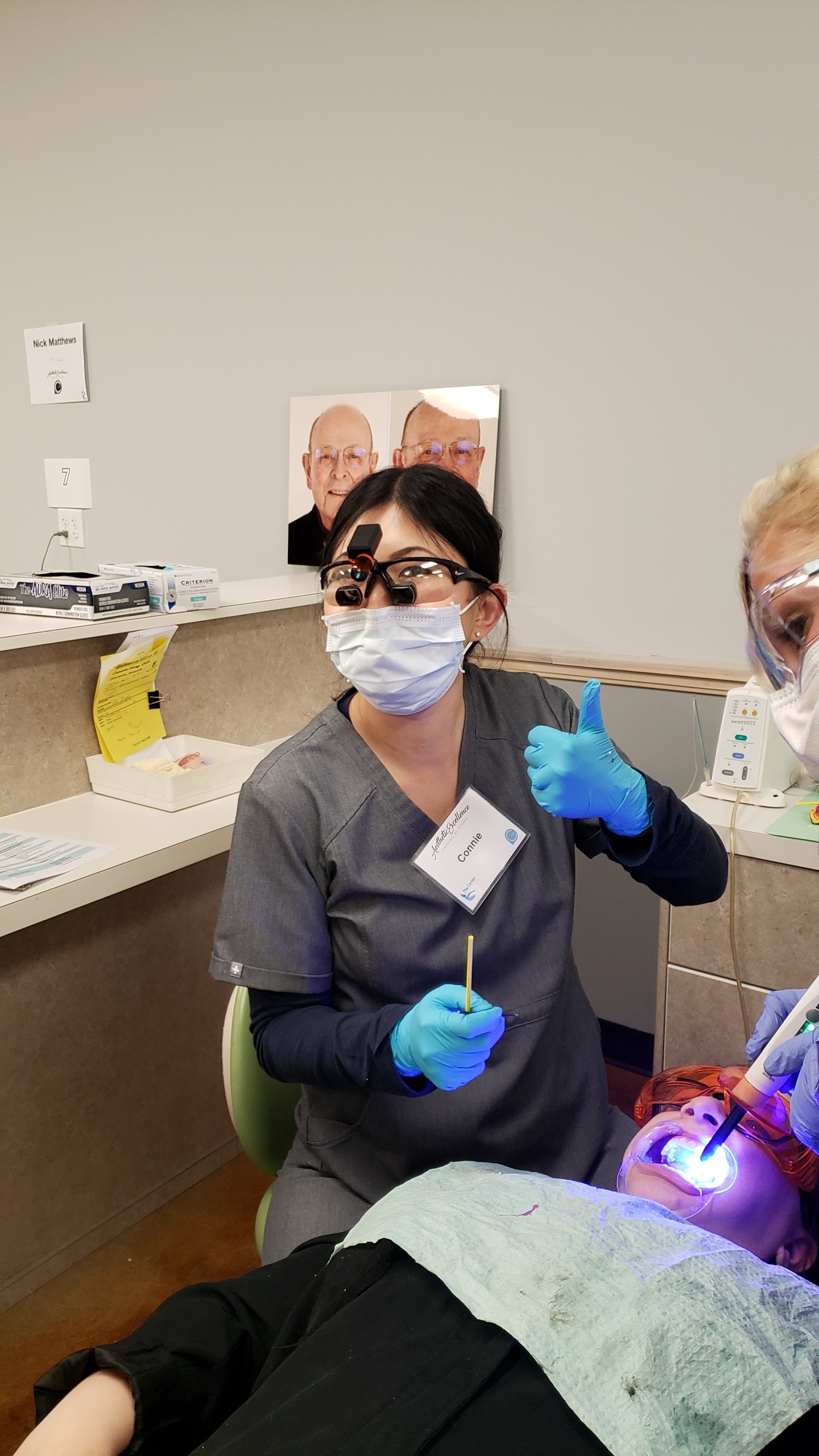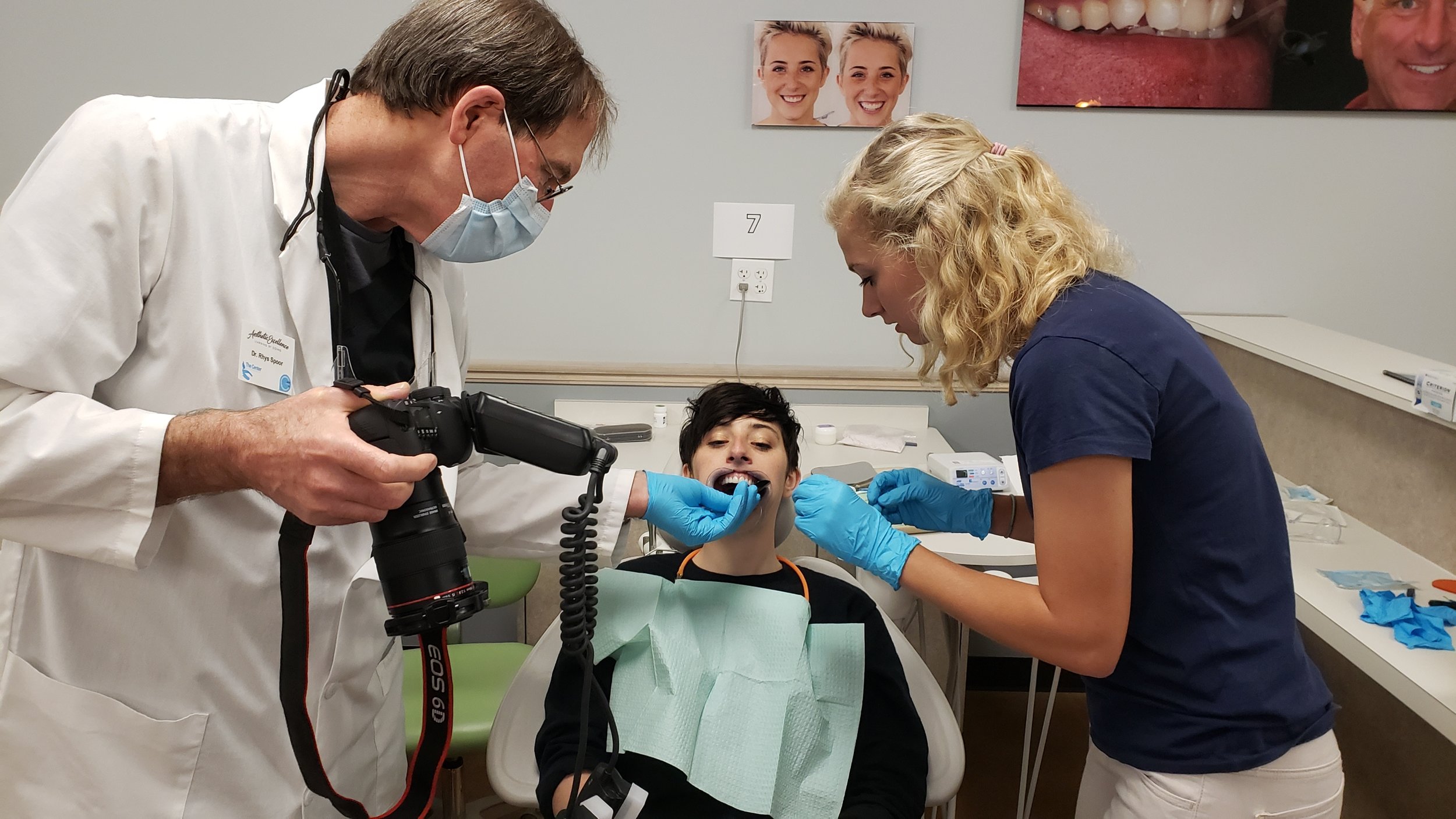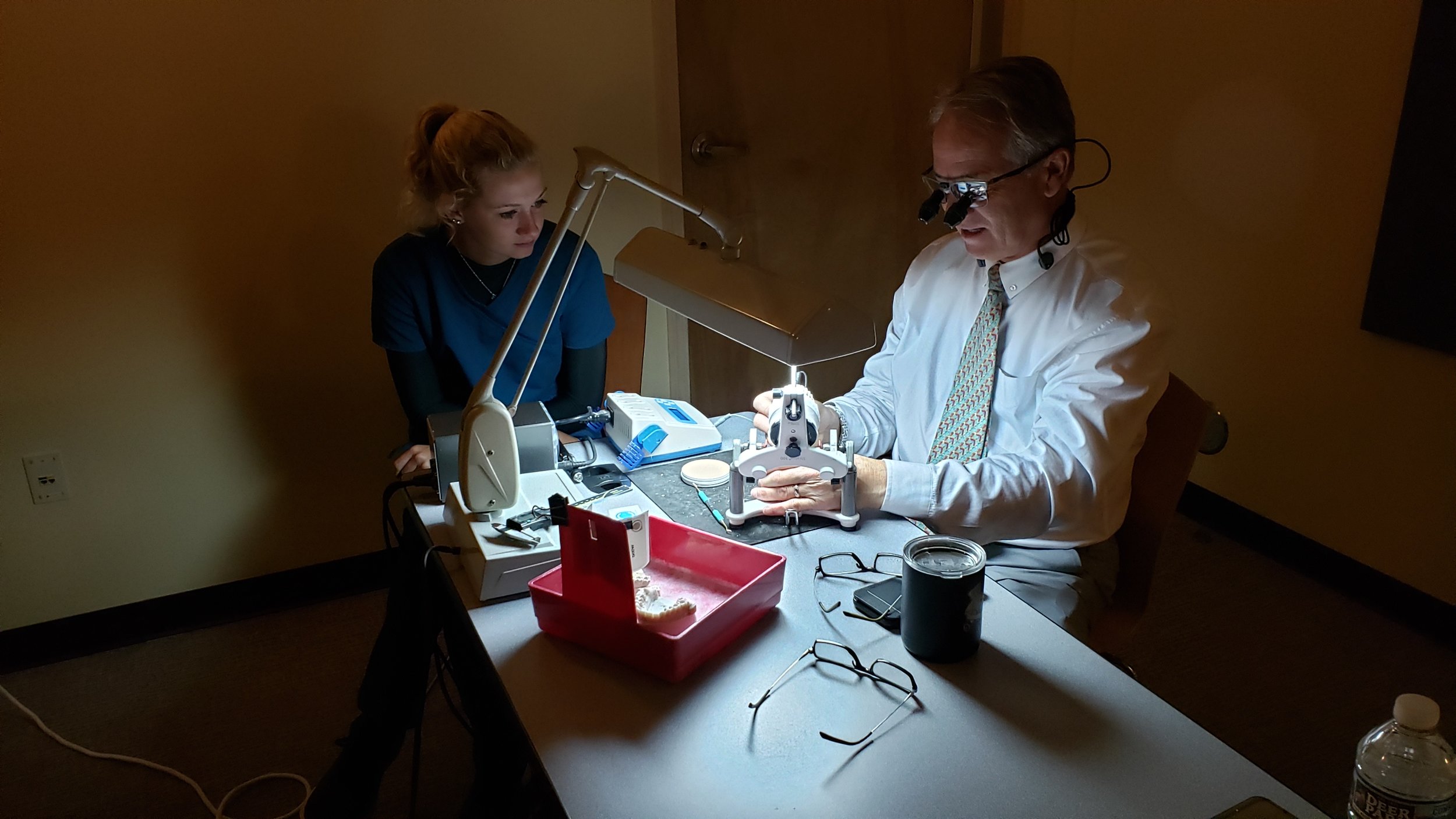We had the opportunity to work with this vibrant young lady at the Aesthetics Excellence course, taught by Dr. Rhys Spoor and hosted by Dental Ceramics Lab in Richfield, Ohio. She hated her smile and we did 10 upper veneers and crowns where appropriate.
Please scroll down to see the 1-minute video for highlights from our time there and a 3-minute video for her story!
If you’re considering ways to restore your teeth and enhance your smile, you have two great options with crowns and veneers. Both alternatives are popular, and can achieve great results.
Although both treatments will improve the appearance of your smile, there are some key differences between them which means it is important to choose the right option for your particular situation. This quick guide will give you all the information you need before discussing your treatment options with your dentist.
What are veneers and crowns?
Both crowns and veneers are forms of dental restoration. They work by adding a covering to an existing tooth to improve its appearance or function. The main difference between a veneer and a crown is how much of the original tooth is removed, how thick the material covering the tooth is, and how much of the tooth is covered. Both crowns and veneers are effective in improving the aesthetic appearance of teeth.
A veneer is usually made of wafer-thin porcelain and is bonded to the front of a tooth. The porcelain is color-matched to your natural teeth. Veneers are strong but brittle, and sharp or repeated impacts can dislodge or crack them.
A crown encases the entire tooth. It can be made of metal, porcelain or a combination of both. It is usually around double the thickness of a veneer, making it more durable and resistant to cracking than a veneer.
Differences in tooth preparation
Veneers are considered a more conservative treatment than crowns. Less of the tooth needs to be removed in order to place a veneer. Your dentist will usually just remove a thin layer of tooth enamel from the front of the tooth and will not normally need to touch the core or the back of the tooth.
Crowns require more of the existing visible tooth to be trimmed away before the crown is placed. This typically means two to four times as much tooth reduction as veneers.
There is sometimes a gray area in the preparation required for veneers and crowns. Occasionally, in situations where veneers are being used to correct alignment, teeth being prepared for veneers may be accompanied with the more aggressive trimming characteristic of crowns. This can create some confusion between which type of treatment is being used.
When are veneers the best choice?
Veneers are a great choice when the issues you want to address are relatively minor and aesthetic in nature. Veneers are an excellent solution for problems such as badly stained teeth, chipped teeth, minor cracks in teeth, small gaps between the teeth and superficial misalignment. In these cases, veneers can significantly improve the overall color and regularity in appearance of the teeth, delivering a much-improved smile.
Except in some very specific circumstances, once a veneer has been applied to a tooth, it will always require covering going forward. You might need a replacement veneer, or the tooth could be further reduced allowing the placement of a crown. Veneers are just as permanent as a crown and shouldn’t be chosen on the basis that they are either temporary or reversible.
When are crowns the best choice?
Crowns are typically needed instead of a veneer when there are more fundamental issues with existing teeth. These situations include teeth that are badly broken or cracked, or where root canal treatment has been needed. The crown is used to keep the tooth intact and protect it from any further damage that might lead to extraction. Once the crown is cemented firmly into place, it becomes the new outside surface for the tooth with the nub of the original tooth safely inside.
Another situation where crowns are a better choice than veneers is where the edge of the tooth has been damaged by grinding. A veneer only covers the front of a tooth, not the edges. Therefore teeth that have been ground down usually require crowns to improve their appearance.
Crowns are effective solutions for damaged teeth and can deliver a significant change in both the color and shape of existing teeth. Once a crown has been placed, the tooth will always require some sort of covering.
Differences in insurance coverage
The cost of crowns and veneers is very similar. However, veneers are usually considered a purely aesthetic treatment and are therefore very unlikely to be covered under dental insurance. As crowns are typically used to treat both functional and aesthetic issues, they are more likely to be covered by dental insurance.
Maintaining your perfect smile
With proper care, your veneers or crowns should last for approximately ten years. The porcelain used for veneers and crowns is reasonably stain-resistant, but without proper brushing and flossing, they can still become discolored. Whitening and bleaching treatments don’t work on these sorts of restorations, so it’s particularly important to maintain oral hygiene and good eating habits. It’s also important to take care not to damage your crowns and veneers by biting on hard substances so that you prolong their lifespan and your beautiful smile.
Highlight clips
Words from Mandi







